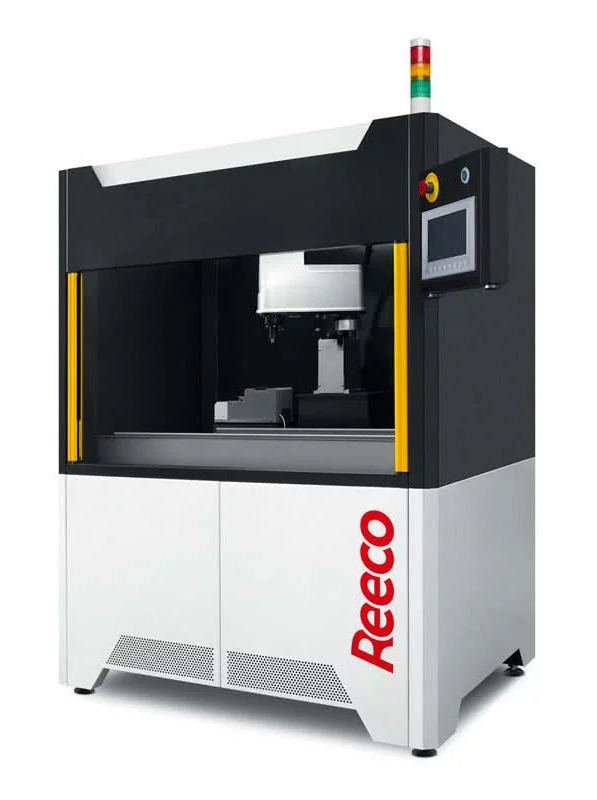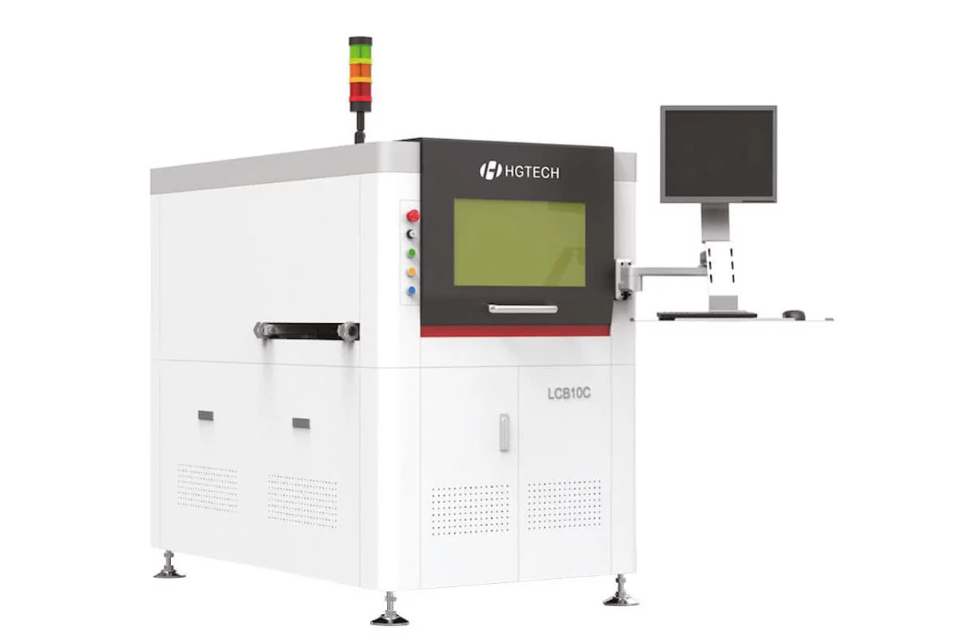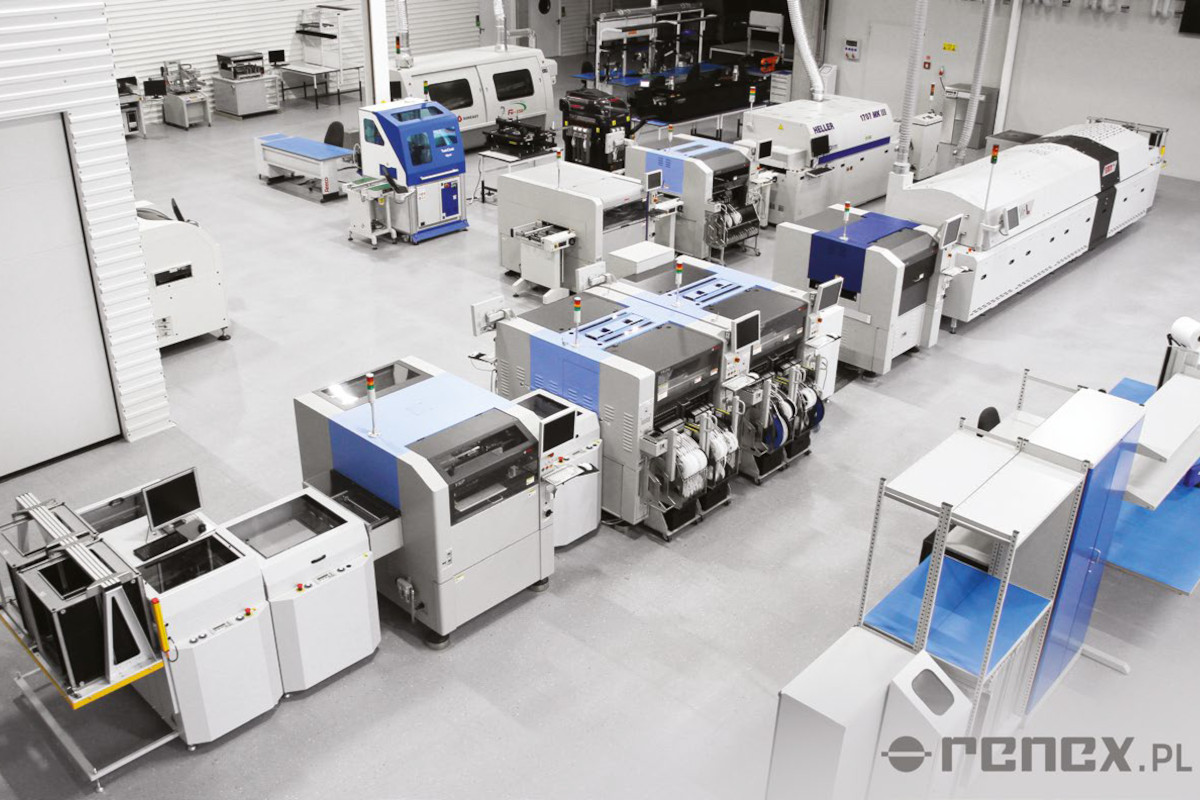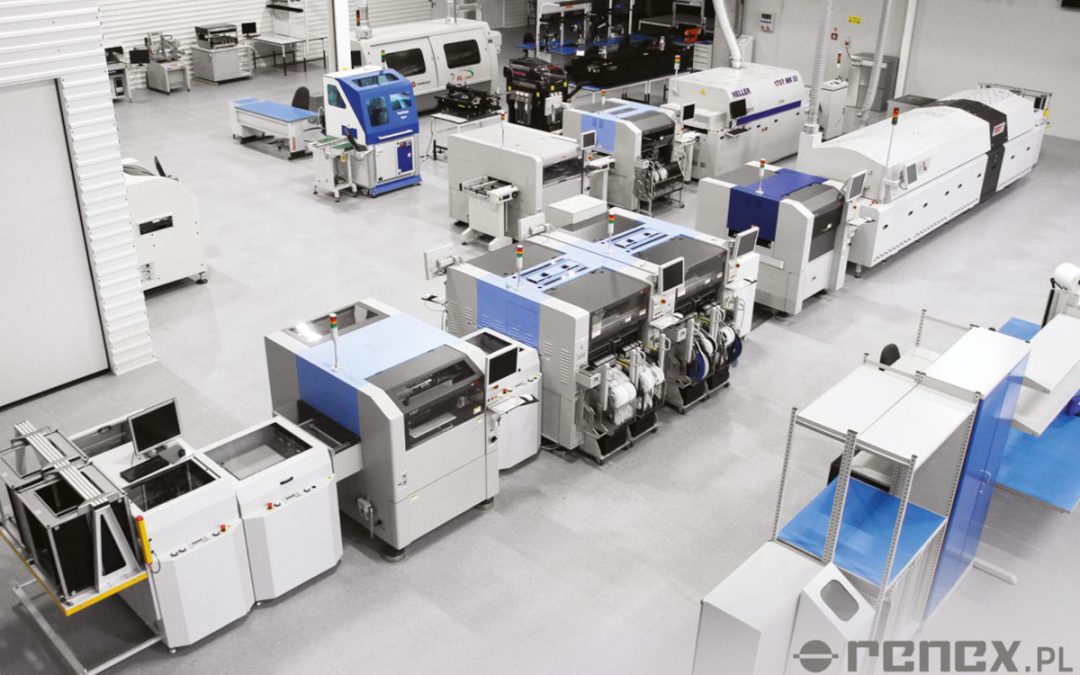Data collection and analysis systems are becoming an integral part of the manufacturing process. This is particularly evident in the electronics industry, where it is becoming crucial for competitiveness to be able to record downtime, verify its causes and prevent it in the future, and collect data on all electronic packages leaving the production line.
A situation in which a product returned to the manufacturer, for example in the course of a complaint or return, could be problematic. After all, how to identify the electronic package in question? But this is, of course, only a hypothetical problem, the clear and common solution to which is product marking. Giving all boards unique markings – for example, in the form of QR codes – makes it easy to attribute each product to archived data and to determine, for example, when and with which components from which supplier it was produced. Less obvious, however, seems to be which marking method to choose for a given type of production and product.
Two marking methods
In the electronics manufacturing industry, there are two primary ways to accomplish this: marking with stick-on labels (stickers) and laser marking. The first method involves printing labels – usually containing a QR code referring to subsequent items in the database – and sticking them on the PCB. This process can, of course, be done manually with a printer. However, in the case of modern companies – operating with several fully automated lines – the use of such basic solutions would be a production bottleneck. The efficiency of the line then drops to the real capacity of this weak link. The solution to the problem, however, is in-line automated labeling stations, such as the REECO labeling robot. The equipment in this series, which was awarded the TERAZ POLSKA emblem in 2020, is used in the electronics industry for a number of tasks complementary to SMT lines, such as THT soldering, screwing, dispensing or conformal coating.
The particular model of labeling equipment presented here combines the solutions used in the entire REECO series of robots with a system that allows printing and precise application of labels. Its basis is the safety cage and the YAMAHA SCARA manipulator placed in it. An integrated printer feeds successive labels into the working field of the SCARA arm. In parallel, a PCB is inserted via a transport system. The manipulator, using the appropriate head, picks up the finished label and places it on the board with high precision. This type of equipment is set up in the production line right after the loading station and before the equipment used for any other manufacturing processes.

This allows the physical plate to be labeled at the very beginning of production and thus to be permanently assigned to the data collected by data collection and analysis systems. It is a solution for low-cost automation of the labeling process and maintaining the high productivity of SMT lines. By its nature, however, it remains fraught with the limitations of label materials, namely durability and temperature resistance. The choice of this option should therefore take into account what type of labels are being applied, at what stage, and what kind of label durability is expected.

An alternative that solves this problem and the second method mentioned is laser marking. Unlike labeling, it is a permanent method, resistant to temperatures and to interference from third parties. Devices currently available on the market allow precise burning of markings on virtually all types of PCBs.
As in the case of labeling markers, this type of equipment is also set at the beginning of the SMT line. However, there is no risk of damaging the already given marking or removing it in the course of further production stages. An example of such equipment is the entire portfolio of HG Laser, a world-renowned manufacturer of industrial lasers, and in particular its flagship model: LCB – PCB Dual Heads PCB Laser Marking Machine.
The operation of the dual-head laser marking machine is based on a patented technology that uses two CO2 laser heads to simultaneously mark both sides of the PCB, significantly saving production time and increasing line efficiency. The use of the rotation module is simple, once the marking is completed, the PCB is rotated over to apply the marking on the other side, and the location marking accuracy is not negligible: ±0.1 mm. The use of two heads eliminates the problem of the rotating system, which even doubles marking time. The device can work in line or independently, depending on the customer’s needs. All series come standard with CCD Vision Positioning and Code Grading (Fiducial), automatic guide rail width adjustment and automatic laser distance control.
Technological support group
Selecting the right marking machine for the production processes implemented at a given enterprise is not an easy process. Among other things, it requires balancing the relationship between the value of the initial investment and the cost of operation, or taking into account such factors as product features or warranty policy. However, this choice can be made easier by seeking expert advisory support. This is provided by specialists from RENEX Group – one of the largest and longest-established Polish companies supplying equipment for the electronic package manufacturing and repair industry. Through the RENEX TECHNOLOGY AND TRAINING CENTER, the Group provides a wide range of assistance in terms of training, service and, particularly relevant to this article, consulting support.

Anyone wishing to take advantage of such services has the opportunity to draw on the knowledge and use the advanced production equipment available on site in developing their own processes. If you are interested, please contact your RENEX Group technical and sales advisor and visit the RENEX TECHNOLOGY AND TRAINING CENTER and DEMO-ROOM, where you can see and test marking machines and other equipment from the company’s offer.
